Signals and Noise
Joachim Köppen Kiel Nov. 2015
At what signal-to-noise ratio one can still detect a signal?
To show the effects of noise on a weak signal, an audio file is prepared with
a background of white noise onto which is placed a signal in the form of the
Morse letters from A to N at 800 Hz, with a pause in between. After every two
letters the power of the signal is reduced by 5 dB (a factor of 3) so that
the signal eventually disappears in the noise.
The first letters A and B have a signal-to-noise ratio (SNR) of +20 dB, C and D habe +15 dB,
F and G +10 dB, H and I +5 dB, J and K 0 dB, and L, M, N are -5 dB, hence below the noise.
First the original recording at full bandwidth 11 kHz
Click on the left hand spectrogram to start the audio player.
Check up which letter is the one that you can clearly identify.
For solid copy of telegraphy character one normally demands that
the signal-to-noise is better than +10 dB.
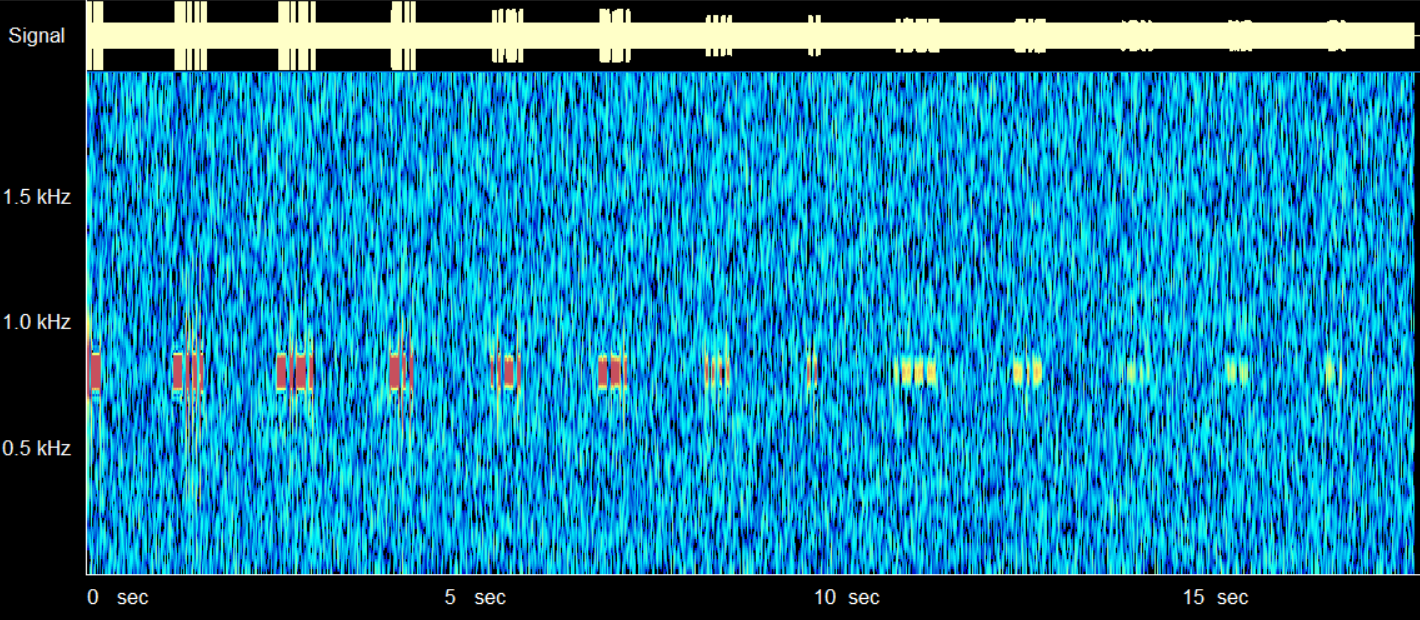
|
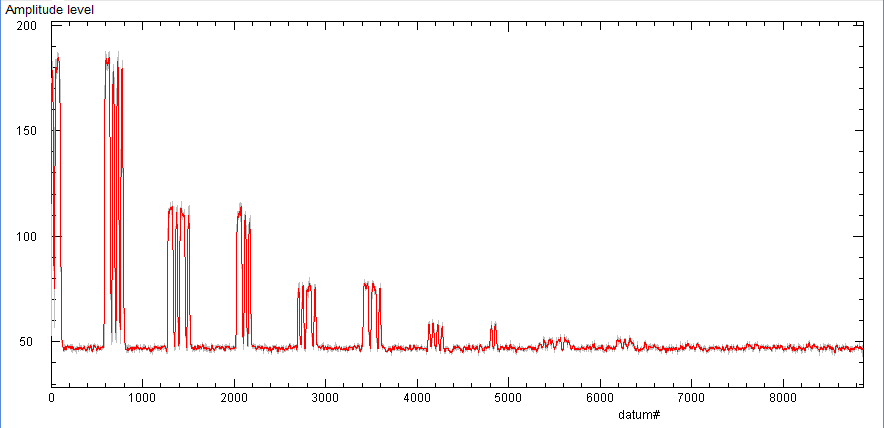
|
|
The spectrum is done with a bandwidth of about 50 Hz. All but the three
last letters stand out quite clearly. However, the K sounds a bit like AA,
as the first dash is somewhat mutilated by noise. Although one can detect
the letters quite clearly, even if the signal is only as strong as the noise,
this is not a completely reliable detection! Thus very reasonably, the common
value for the detection threshold of S/N = +10 dB is set on the safe side.
|
When one rectifies the audio signal, the noise enters by its full bandwidth
of 11 kHz. Again, all letters until K can be detected.
The signal-to-noise ratio of the rectified signal is 180/47 = 3.8 in amplitude,
thus 11 dB for A and B.
|
If the same signals are passed through a low pass filter with
a cut-off frequency of 1kHz
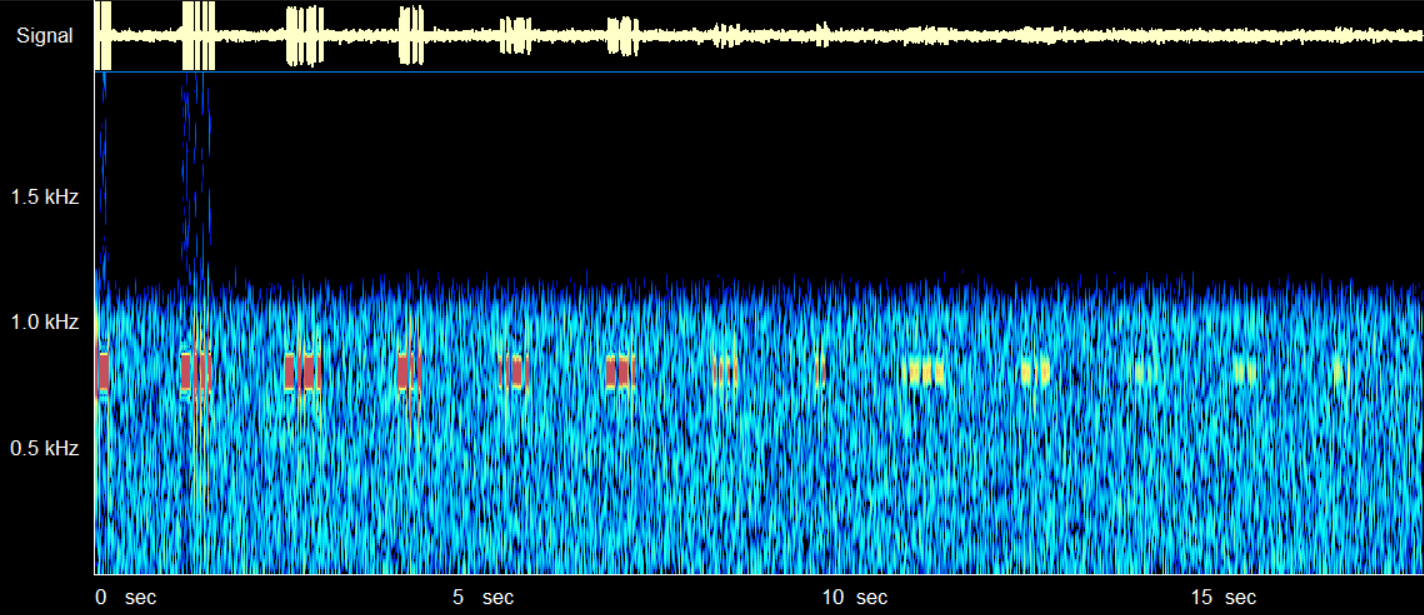
|
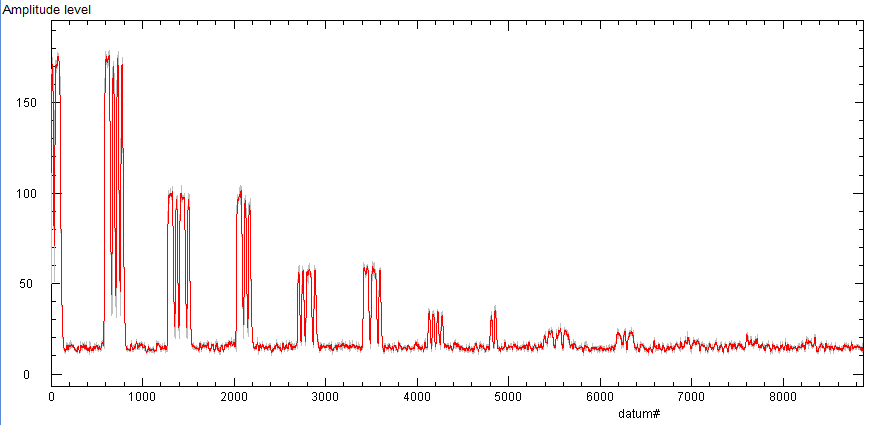
|
|
The spectrum shows the action of the low pass filter.
The audio impression is not dramatically better, merely one
remarks that the noise has a lower pitch.
|
Character detection of the rectified signal has improved. The
letters J and K are perhaps twice as strong.
One would expect an improvement by a factor of 11kHz/1kHz = 10 dB.
|
Application of a band pass filter with bandwidth 100 Hz
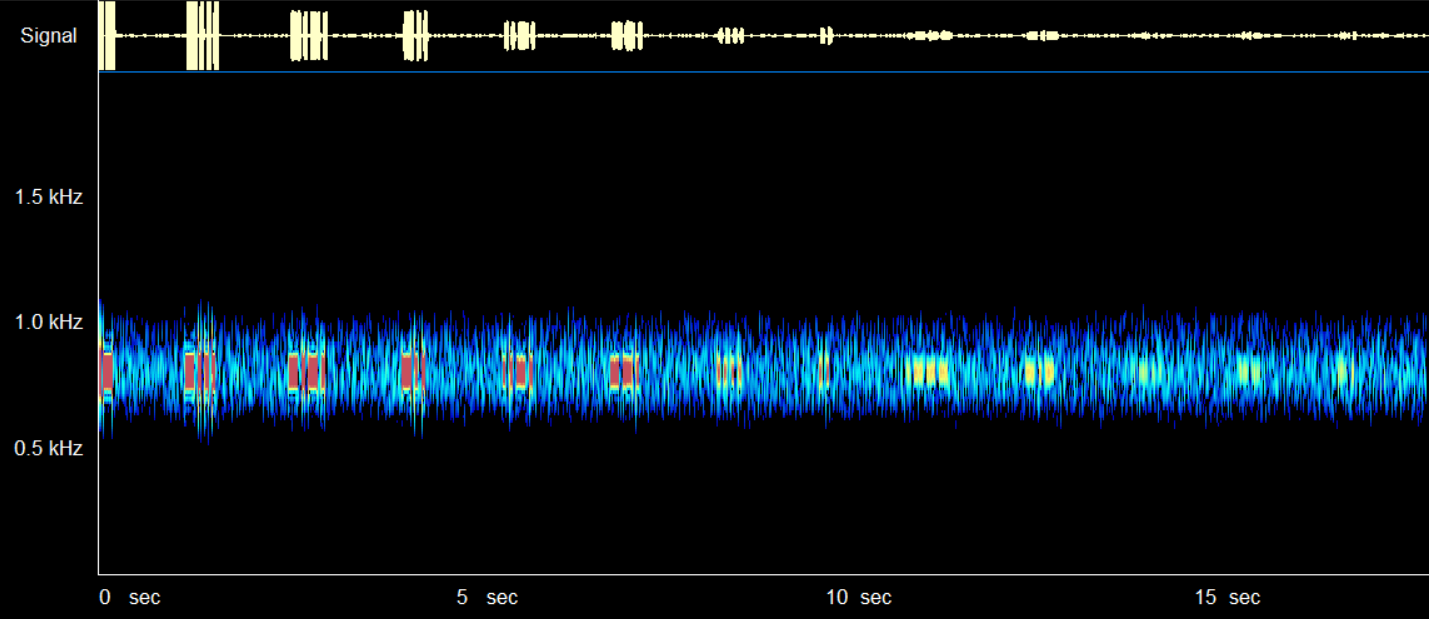
|

|
|
The spectrum shows the action of the filtering, which is
also apparent in the audio impression.
|
The reduction in bandwidth - by a factor of 10 = 10 dB - gives another
improvement of the detectability. The zoomed plot shows that all
letters can be detected.
|
Here is a telegraphy message from the 20 m amateur band, first
with the full 2 kHz bandwidth:
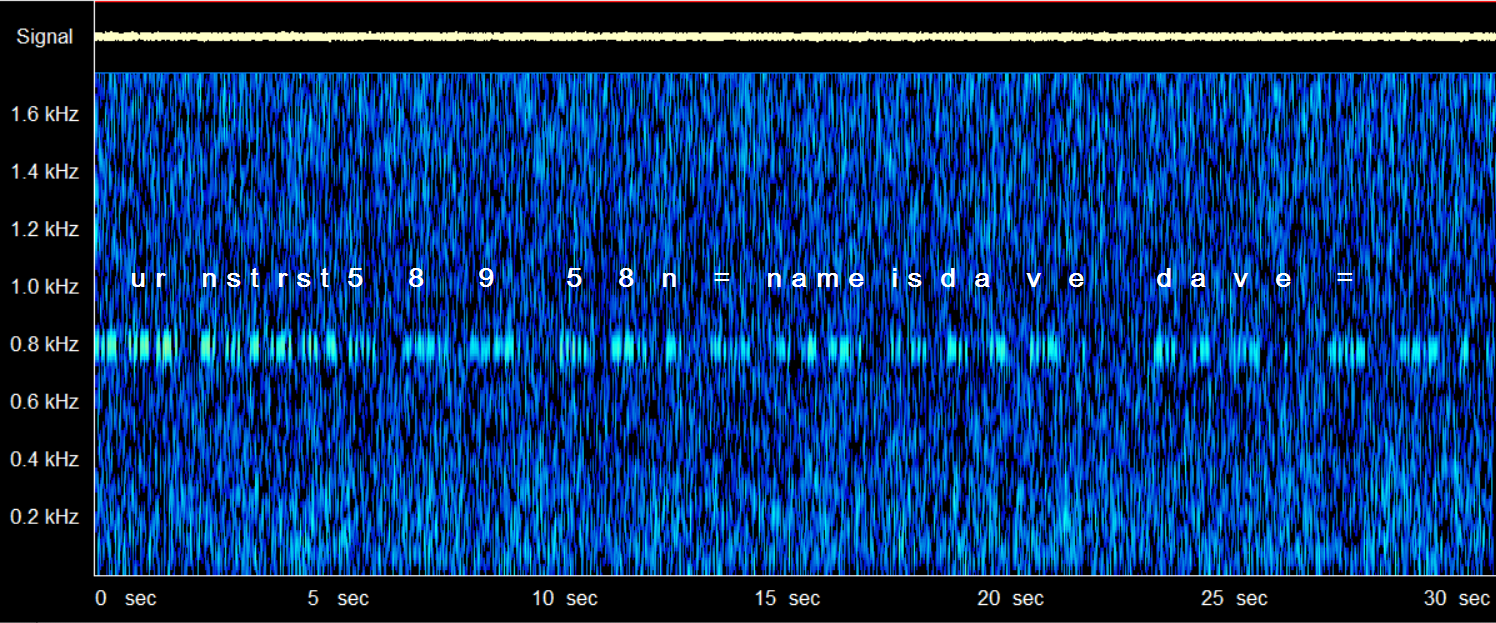
|
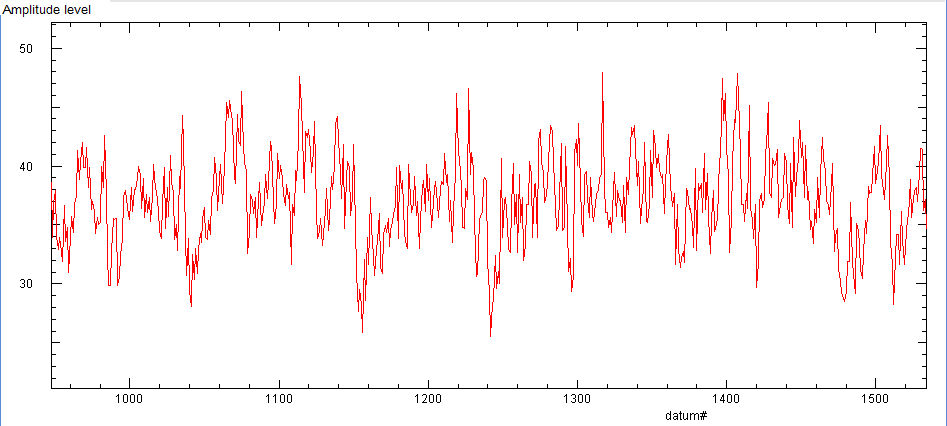
|
Without any difficulty one can pick up the Morse code letters.
Our ear+brain system does notice the broadband noise, but it easily concentrates
on the signal with its 800 Hz tone. The message reads:
"ur nst rst 589 58n = name is dave dave =
In the spectrogram - which analyses the signal with a bandwidth of 50 Hz -
the strength of the signal and the noise nearby is measured:
the signal-to-noise ratio is almost +20 dB.
|
Rectifying the audio signal does not give any information, as the broadband
noise dominates: the signal-to-noise ratio of +20dB deteriorates by
the factor 2kHz/50Hz = 17dB, hence S/N = +3 dB.
|
The same recording is passed through a bandpass of 100 Hz bandwidth:
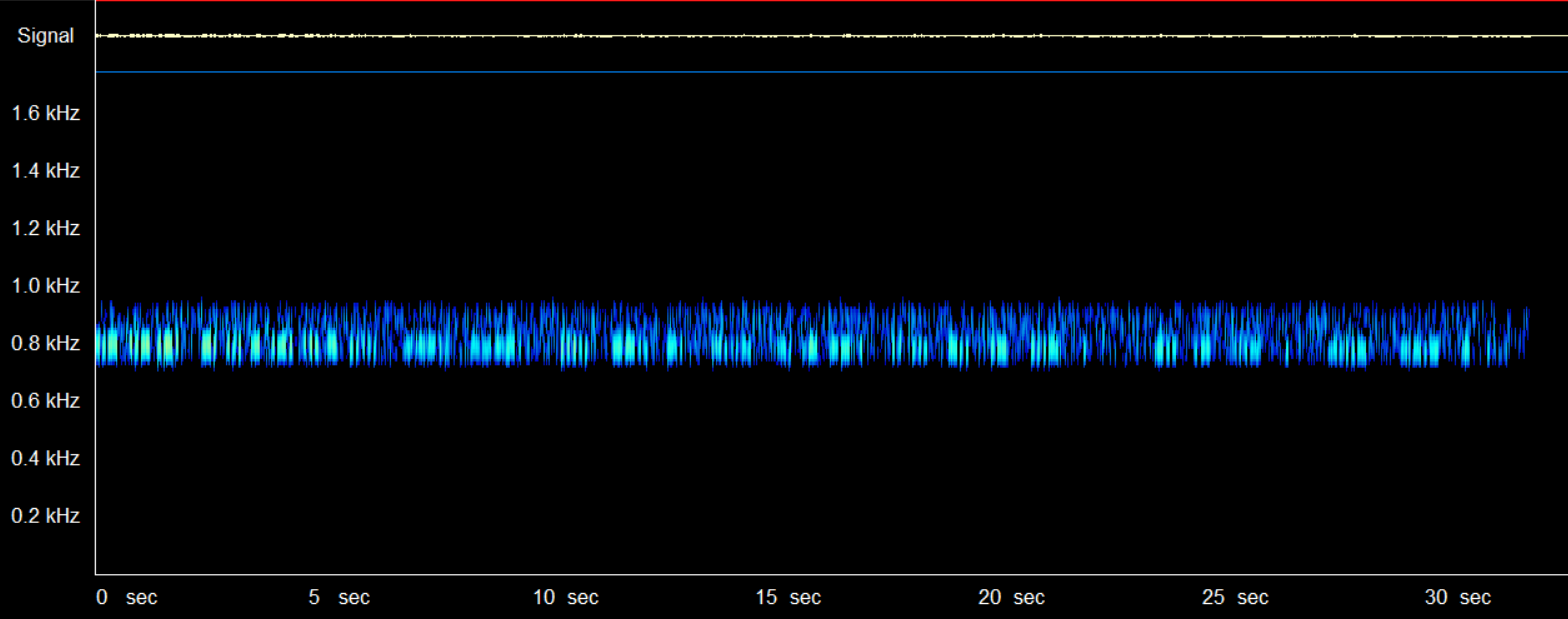
|
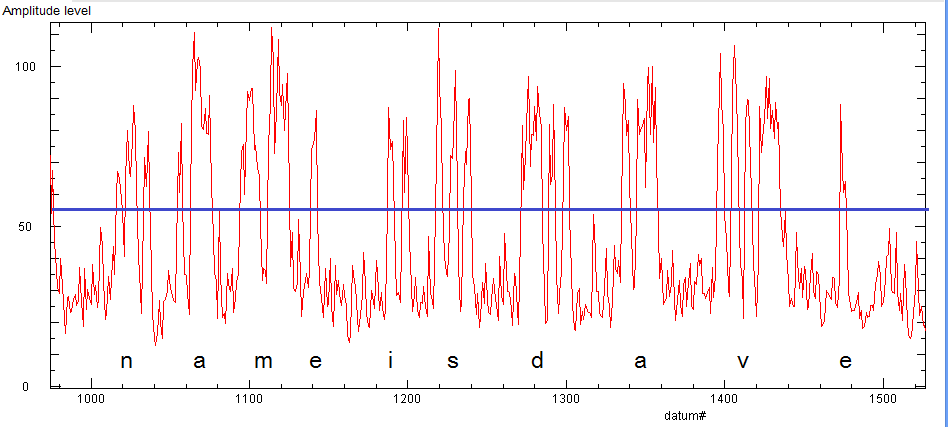
|
|
The signal sounds less noisy, but the reduction to frequencies around 800 Hz
makes it slightly better to detect, but more monotonous, less pleasant, and
quite tiring.
|
The rectified signal now shows clearly the dots and dashes of the Morse code,
which can be extracted from the analog data by simple thresholding, indicated
by the blue horizontal line.
The S/N ratio based on the spectrogram is +17 dB. From the plot an effective
S/N ratio in the rectified signal is estimated as 80/30 = 2.7 in amplitude
or about +8 dB.
|
last update: nov 2015 J.Köppen